 | Elias Loomis - Algebra - 1846 - 376 pages
...I already found, we obtain Ir — a ~ r — 1 ' PROGRESSIONS. Multiply the last term by the ratio, subtract the first term, and divide the remainder by the ratio less one. If a series is a decreasing one, and r consequently represents a fraction, it is convenient to change... | |
 | Horatio Nelson Robinson - Algebra - 1848 - 354 pages
...116.) Equation (2), put in words, gives the following rule for the sum of a geometrical series ; RULE. Multiply the last term by the ratio, and from the...divide the remainder by the ratio less one. EXAMPLES FOR THE APPLICATION OF EQUATIONS (1) AND (2). 1. Required the sum of 9 terms of the series, 1, 2, 4,... | |
 | Joseph Ray - Algebra - 1848 - 250 pages
...Hence, the RULE, FOR FINDING THE SUM OF A GEOMETRICAL SERIES. Multiply the last term by the ratio, from the product subtract the first term, and divide the remainder by the ratio less one. EXAMPLES. 1. Find the sum of 10 terms of the progression 2, 6, 18, 54, &,1:. The last term =2x39=2X19683=39366.... | |
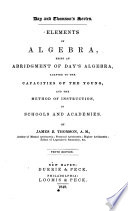 | Jeremiah Day, James Bates Thomson - Algebra - 1848 - 264 pages
...given series. 373. To find the sum of a geometrical series. Multiply the last term into -the ratio, from the product subtract the first term, and divide the remainder by the ratio less one. Obaer. From the above formula, in connexion with the one. iu Art. 368, there may be the same variety... | |
 | Nathan Daboll, David Austin Daboll - Arithmetic - 1849 - 260 pages
...extremes,) and the ratio given, to find the sum of the series. RULE. Multiply tke last term by the ratio ; from the product subtract the first term, and divide the remainder by the ratio, less 1, and the quotient will be the sum of all the terms. EXAMPLES. 1 . A man bought 6 yards of cloth,... | |
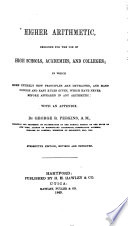 | George Roberts Perkins - Arithmetic - 1849 - 356 pages
...the sum of all the terms, the last term, and the ratio, to find the first term, we have this RULE. Multiply the last term by the ratio, and from the product subtract the product of the sum of all the terms into the ratio, less one. EXAMPLES. 1. The sum of all the terms... | |
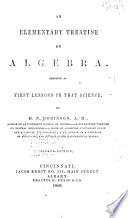 | Horatio Nelson Robinson - Algebra - 1850 - 256 pages
...equation ( 1 ) put in words. Equation (2) gives the following rule for the sum of a series. RULE . — Multiply the last term by the ratio, and from the...term, and divide the remainder by the ratio less one. GENERAL EXAMPLES IN GEOMETRICAL PROGRESSION. 1. What is the ratio of the series 2, 6, 18, 54, &c.?... | |
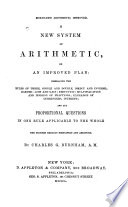 | Charles Guilford Burnham - 1850 - 350 pages
...term, last term, and ratio, are given, to find the sum of the series, we have the following l RULES. I. Multiply the last term by the ratio, and from the...first term, and divide the remainder by the ratio less 1; the quotient will be the answer. II. Divide the difference betiveen the two extremes by the ratio... | |
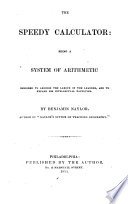 | Benjamin Naylor - 1850 - 334 pages
...Hence the RULE. product will be the last or greater extreme 2- — multiply the last term by the ratio, from the product subtract the first term, and divide the remainder by the ratio less one for the sum of the series, or raise the ratio to a power equal to the number of terms ; subtract one... | |
 | Roswell Chamberlain Smith - Arithmetic - 1850 - 314 pages
...to find the sum of the series, we have the following RULE. 21. Multiply the last term by the ratio, from the product subtract the first term, and divide the remainder by the ratio, less 1 ; the quotient will be the sum of the series required. 22. If the extremes be 5 and 6,400, and the... | |
| |